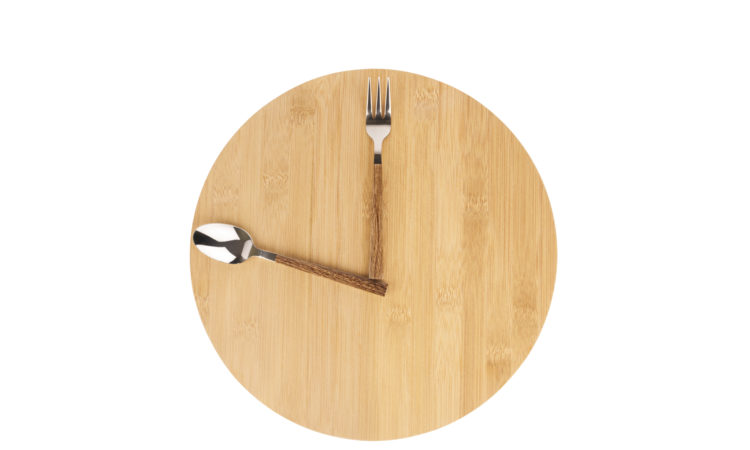
I bless the day I discovered intermittent fasting 4 1/2 years ago.
I can’t say I have returned to looking 25, but – unlike 89% of people in my age group – I do NOT take any prescription Pharmaceuticals.
Or over-the-counter Pharmaceuticals for that matter.
Still, science keeps discovering new benefits to intermittent fasting – and has refined how to do it.
We need this data. On average, Americans now eat every three hours over a fifteen-hour period.
What is Intermittent Fasting
It’s going without food for short periods of time – from skipping one meal to up to three days.
Going without food longer than that is more prolonged “fasting.”
You cannot practice prolonged fasting very often – unless you’re a masochist – but it’s fairly easy to go without food for short periods of time, as long as you set your mind to it.
Therefore, IF can have a steady, consistent beneficial effect on your weight and health.
One of the First Books on Intermittent Fasting
The first book I read was Eat Stop Eat by Brad Pilon. In it, he recommends going without food for a meal-to-meal, 24-hour period.
For example: eat breakfast today, then nothing else until breakfast tomorrow. Or, depending on what you find convenient, go lunch-to-lunch or dinner-to-dinner.
That is still excellent advice, but it can now be further fine-tuned.
Some Now Call IF “Time Restricted Eating”
Many people have found great weight loss and other health benefits simply by restricting their eating time to a under-12 hour window. Many advise women to eat only within 10 hours, and men within 8 hours.
They don’t even skip meals. They just cram all their meals into that time period.
Some even eat for only four hours a day. Myself, I don’t see how you could force yourself to eat three full, healthy meals in just four hours.
For Maximum Health and Energy, Eat According to Your Body’s Biological Clock
This probably accounts for many of the benefits of time-restricted feeding.
People start off eating in the morning and stop before evening. That way, their stomachs are mostly empty by the time they go to bed.
This makes for deeper, healthier sleep.
Exposure to sunlight, especially early in the morning, helps to set your biological clock. It’s ready to eat during the day so it can rest while you sleep.
Besides, the night-time hours are when people tend to eat the most unhealthy foods. Who develops a craving for a salad while binge-watching Netflix?
It’s no surprise: eating at night is closely associated with obesity and diabetes.
Researchers at the University of Alabama studied obese men with prediabetes for weeks, dividing them into two groups – who ate the same amount of food every day.
Group One – spread the meals across 8 hours – from 7:00 AM to 3:00 PM.
Group Two – spread the meals across 12 hours – from 7:00 AM to 7:00 PM.
By the end of the 5 weeks, both groups still weighed the same. But there was one big difference:
The men in Group One had dramatically lower levels of insulin, insulin resistance, and blood pressure.
The Natural Keto “Undiet”
Advocates for the keto diet love to make huge claims for how healthy it is to burn ketones for energy instead of carbohydrates.
It does help increase your resistance to stress and might lower your risk for serious chronic diseases.
However, as promoted, the keto diet has its own serious health consequences.
That’s why I advocate people go on the keto “undiet.”
It’s the natural way to force your body to burn stored fat.
Don’t eat meals of 85% fat, 10% protein and 5% carbohydrates.
Just don’t eat – anything.
That’s intermittent fasting for up to 24 hours.
Once your body burns through the stores of glycogen in muscle cells, it will burn stored fat.
Always Eat Breakfast
The Army conducted an experiment where it divided soldiers into two groups.
They all ate the same amount of food every day for six weeks – just one meal per day.
Group One ate one meal in the morning: breakfast.
Group Two ate their one meal in the evening: supper.
Both groups lost weight.
But Group One lost much MORE weight than Group Two.
Just by eating the same calories in the morning instead of the evening.
The obvious conclusion: If you decide to practice a 24-hour fast one or two days a week . . . make it breakfast-to-breakfast.
I suggest doing a 24-hour intermittent fast one or two days a week while confining your normal eating to an 8-10 hour window.
And start that 8-10 hour eating window as early as possible.
That way, you’re keeping your insulin and blood sugar levels under control every day.
https://www.nutritionfacts.org/video/time-restricted-eating-put-to-the-test/
https://www.health.harvard.edu/blog/intermittent-fasting-surprising-update-2018062914156
https://www.youtube.com/watch?v=M0VKVgqW7uc
https://medicalxpress.com/news/2020-07-meals-effects-body-rhythms-metabolic.html
https://www.nejm.org/doi/full/10.1056/NEJMra1905136
https://nutritionfacts.org/video/eat-more-calories-in-the-morning-than-the-evening/







